From the Iberian Peninsula to Your Table—Presenting Three Spectacular Extra Virgin Olive Oils from Spain and Portugal!
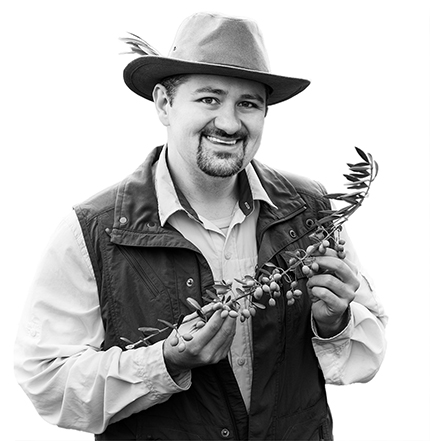
- Bursting with healthful polyphenols, all have been rushed to you by jet at their peak of flavor and nutritive value.
- All have been certified by an independent lab to be 100 percent extra virgin.
- Feature these dazzling EVOOs in regional recipes specially chosen to showcase their vibrant flavors.
- All are Club exclusives, hand-selected by the Olive Oil Hunter, including a blend of rare Portuguese varietals grown nowhere else on Earth.
As the Olive Oil Hunter, I identify with seekers in life and in literature. And when I’m in Spain, my quest is inspired by the figure of Don Quixote: the enduring knight errant who, accompanied by his trusty sidekick, Sancho Panza, journeys through the world, encountering real and imagined adversaries as well as forces beyond his control. Do I, like Cervantes’ iconic hero, tilt at windmills, believing them to be monsters? Sure. There are certainly olive farms I could call “windmills”—those that taunt me with the promise of liquid gold yet leave me empty-handed. Through it all, my Merry Band of Tasters travel by my side, offering their plentiful wisdom, humor, excellent navigational skills, and discriminating palates.
The true object of Don Quixote’s quest is never made known to the reader. With me, however, things are not quite so mysterious: as my Club members know, I’m searching for the finest, freshest olive oils on Earth.
From Antiquity to Ubiquity
Spain is the world’s leading producer of olive oil. Carpeted with an estimated 215 million olive trees (more than a quarter of the world’s olive acreage), Spain produces about 40 percent of the olive oil consumed on the planet. The majority of that production is from Andalusia— specifically, from the province of Jaén (an area about the size of the state of Connecticut), which by itself yields more olive oil than either Italy or Greece.
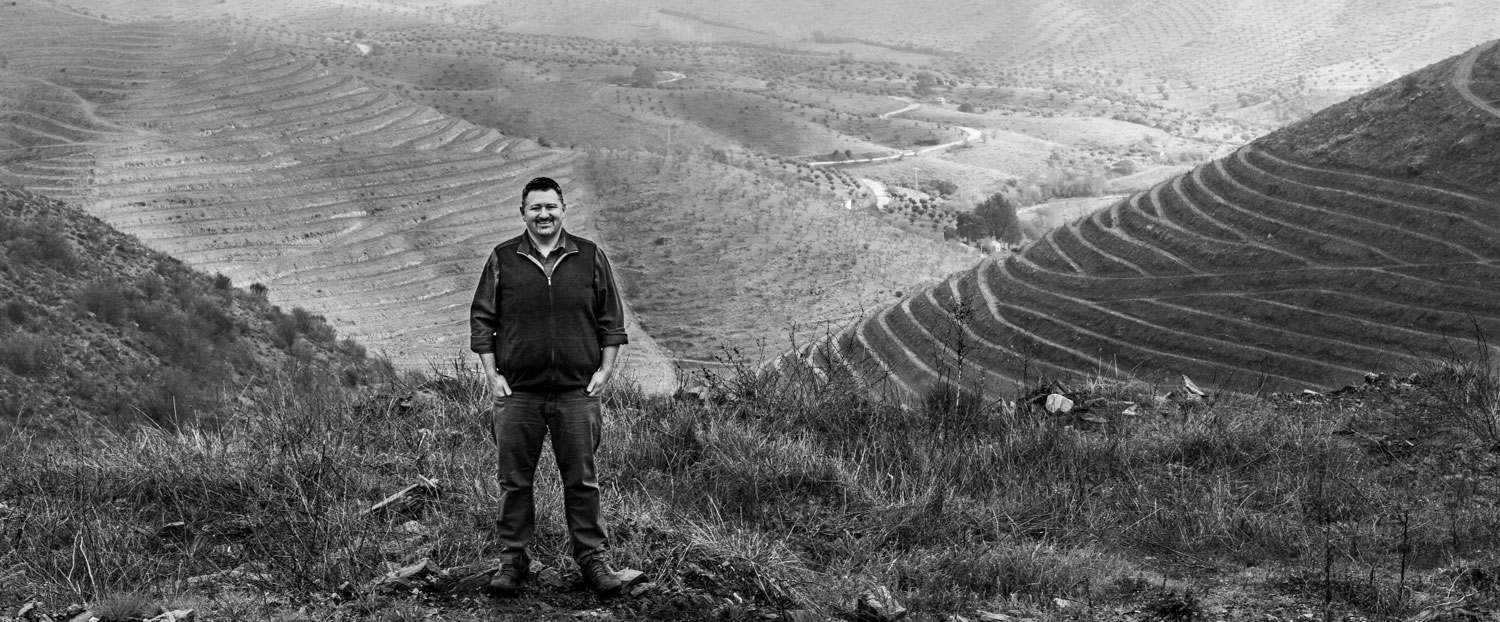
Spain has been an olive oil powerhouse for thousands of years, assisted by Portugal to its west. (The two countries cleave to form the fist-shaped Iberian Peninsula.) On Caesar’s orders, the city of Rome imported most of its olive oil from Iberia. Many thousands of clay amphorae full of olive oil were transported via boats from Iberian olive mills to the ports of ancient Rome.
Over the centuries, Arabic influences in southern Spain improved production techniques and introduced new olive varieties, as well as the modern terms for olive oil: aceite (Spanish) and azeite (Portuguese) come directly from the Arabic term for “olive juice,” al-zayt.
Quality, Not Quantity
Today, olive oil courses through every aspect of Spanish culture, shaping its landscape, cuisine, and economy. Portugal, for its part, is undergoing a 21st-century transformation, as super high-density olive groves (with trees planted very close together) and advanced milling techniques have dramatically increased the olive oil output, especially in the southern region of the country. Currently ninth in the world, Portugal could rise by 2030 to be the third largest olive oil producer, even edging out Greece.
These advances in Portuguese olive oil production are exciting, especially if they result in raising the bar across the board, but my relationships are with the artisanal farmers who prize quality over quantity. In particular, I want to champion those growers working to preserve the unique, indigenous Portuguese olive varieties, which are at risk of being crowded out in favor of more prolific, popular Spanish cultivars.
Mother Nature’s Wrath
Without Mother Nature’s cooperation, though, none of this can happen. She was not kind to Iberia this harvest, hinting at a great season early on, with high yields and high quality, then dashing hopes with damaging weather patterns—a very hot autumn that gave way to rain. This combination left many producers with low yields and low quality, as the conditions were initially too hot to harvest, and then too wet. Jaén, the main producing region, was able to designate only 20 percent of its oil as extra virgin.
To find three superlative oils I knew I’d have to be strategic, drawing on the relationships I’ve cultivated over the years with savvy and conscientious producers whose crops would transcend the trials of this season. But first, some food!
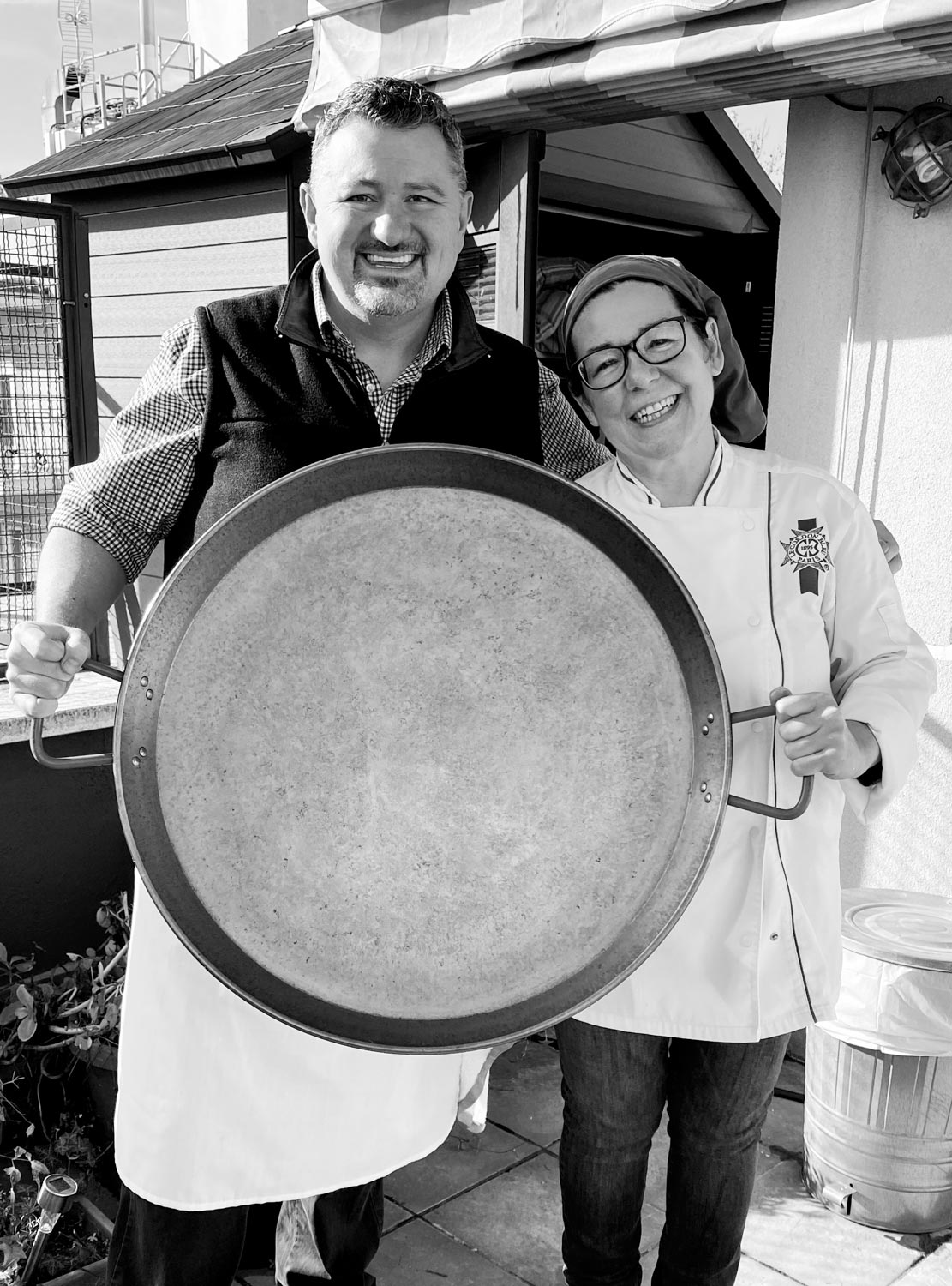
Paella Pit Stop
Upon landing in Madrid, I headed for the central mercado to meet up with Arantxa Lamas, a Cordon Bleu- trained chef and internationally celebrated foodie. Mutual friends had connected us from afar, and we were excited to cook together before I set out on my quest. After selecting beautiful produce and seafood from her favorite local vendors (I also picked up the most delectable jamon ibérico, for later noshing), we repaired to her apartment to prepare traditional paella. I was happy to put my chef skills to the test, relieved that I can still prep vegetables like a pro. We shared a laugh over the recent outcry that greeted celebrity chef Jamie Oliver when he posted a photo of his paella containing chorizo: sausage is a big choriz-NO if you’re looking to be authentic.
Arantxa was thrilled to hear me describe the Club and applauded our efforts to educate Americans about the extraordinary health benefits and tantalizing flavors of fresh-pressed olive oil. If you can believe it, she was almost as excited about polyphenols as I am.
Don Quixote Strikes Gold
Fueled for the adventure ahead, my Merry Band of Tasters and I hit the trail. We started in the Guadalquivir River Valley in Jaén, at the lauded farm of Francisco “Paco” Vaño. A longtime friend of the Club and a perennial award-winning producer—Paco’s oils just received an outstanding “perfect 100” from the olive oil bible Flos Olei—he took an ingenious route around the stultifying heat: his team harvested at night in order to deliver cool fruit to the mill. (Heat degrades the fruit, destroying its aromas and flavors, if the olives are not pressed quickly after picking.)
Paco and I collaborated on a complex, robust blend to secure the bold selection for this season’s trio.
Next, I was delighted to revisit the spirited collective of producers at Aroden, in the picturesque region of Priego de Córdoba. This dedicated, talented young team has won my heart with their earnest energy and my palate with their fantastic single-varietal Hojiblanco.
The final leg of our journey took us to northeastern Portugal, to the steep and gnarled forests of the Alto Douro region. Here, the Madeira family creates exquisite oils from rare and unique Portuguese olive varieties you’ll encounter nowhere else on Earth.
Your humble knight lays these treasures at your feet.
Read on to learn more about the incredible artisans who created these beauties. You’ll also find mouth-watering recipes below that showcase this liquid gold on your dining table. I can’t wait for you to taste these spectacular oils!
Happy drizzling!

T. J. Robinson
The Olive Oil Hunter®
P.S. Cold weather may cause cloudiness in your bottles of olive oil. Pay it no heed, as this has no effect on quality or flavor. Simply bring your oils to room temperature and most of this cloudiness should disappear. For best results, always store your oil in a cool, dark place, preferably in a cabinet away from heat and light.
This Quarter’s First Selection
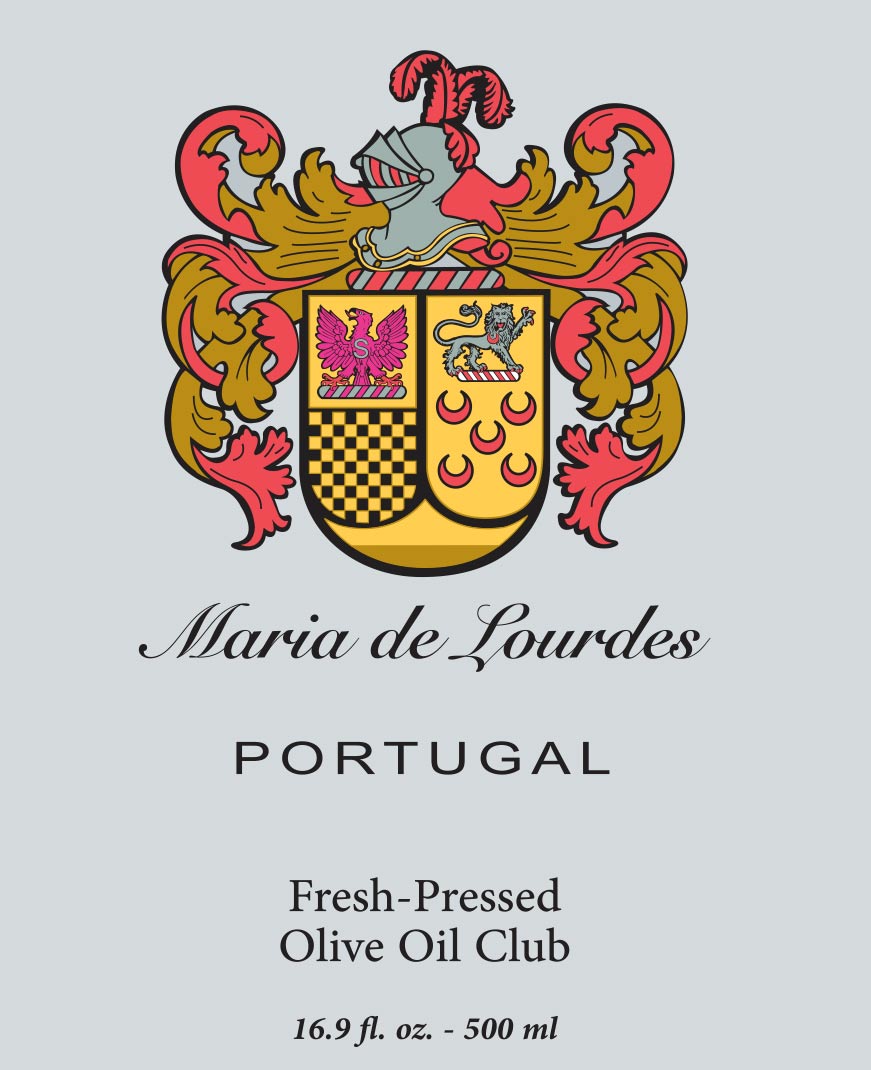
When I tell my Club members that I travel to the ends of the earth in my quest for the finest olive oils, it’s no exaggeration. Ancient Romans believed that Portugal’s southwestern-most point, at Sagres, was the end of the world, rocky cliffs that dropped down to a hissing ocean with monsters in its depths, the place where the sun sank into the sea.
About 4 hours north and 50 miles inland lies the province of Trás-os-Montes, whose name means “beyond the mountains.” Here, in the remote Alto Douro region, the Madeira family has defied expectations to become one of the finest olive oil producers in the world.
Two decades ago, Celso Madeira, an acclaimed engineer, announced to his children that in his retirement he aspired to produce premium olive oil on the family’s land in the Alto Douro countryside. At that point the ancient olive trees—some up to 900 years old—were untended, and nobody in the family knew the first thing about producing olive oil anymore. One of Celso’s sons, Filipe, put his university education on hold and returned home to immerse himself in the practices of producing premium EVOO.
A quick study and meticulous, caring manager, Filipe transformed the overgrown, mossy groves into a first-class olive farm, with technologically advanced and temperature-controlled pressing facilities. The Madeiras’ oils rose rapidly to dominate national olive oil contests, including a five-award sweep of Portugal’s OLIVOMOURA competition with their very first entry. Their trees represent rare, indigenous Portuguese olive varieties grown nowhere else on Earth.
I was thrilled when advance word from my scouts indicated that the Madeiras anticipated an excellent harvest. Over the years I have developed a warm friendship with 86-year-old Celso and Filipe, and a visit to their grove and gracious home is always on my itinerary. But Mother Nature calls the shots from year to year.
In Alto Douro the olives must be picked by hand, and the trees receive water from rainfall or not at all. The rugged, mountainous terrain is not rocky or sandy, like Mediterranean terroir; it is made of schist (xixto, in Portuguese), a flaky, metallic volcanic rock that traps water between its layers. A plant’s roots must burrow down and break through layers of schist in order to reach the moisture.
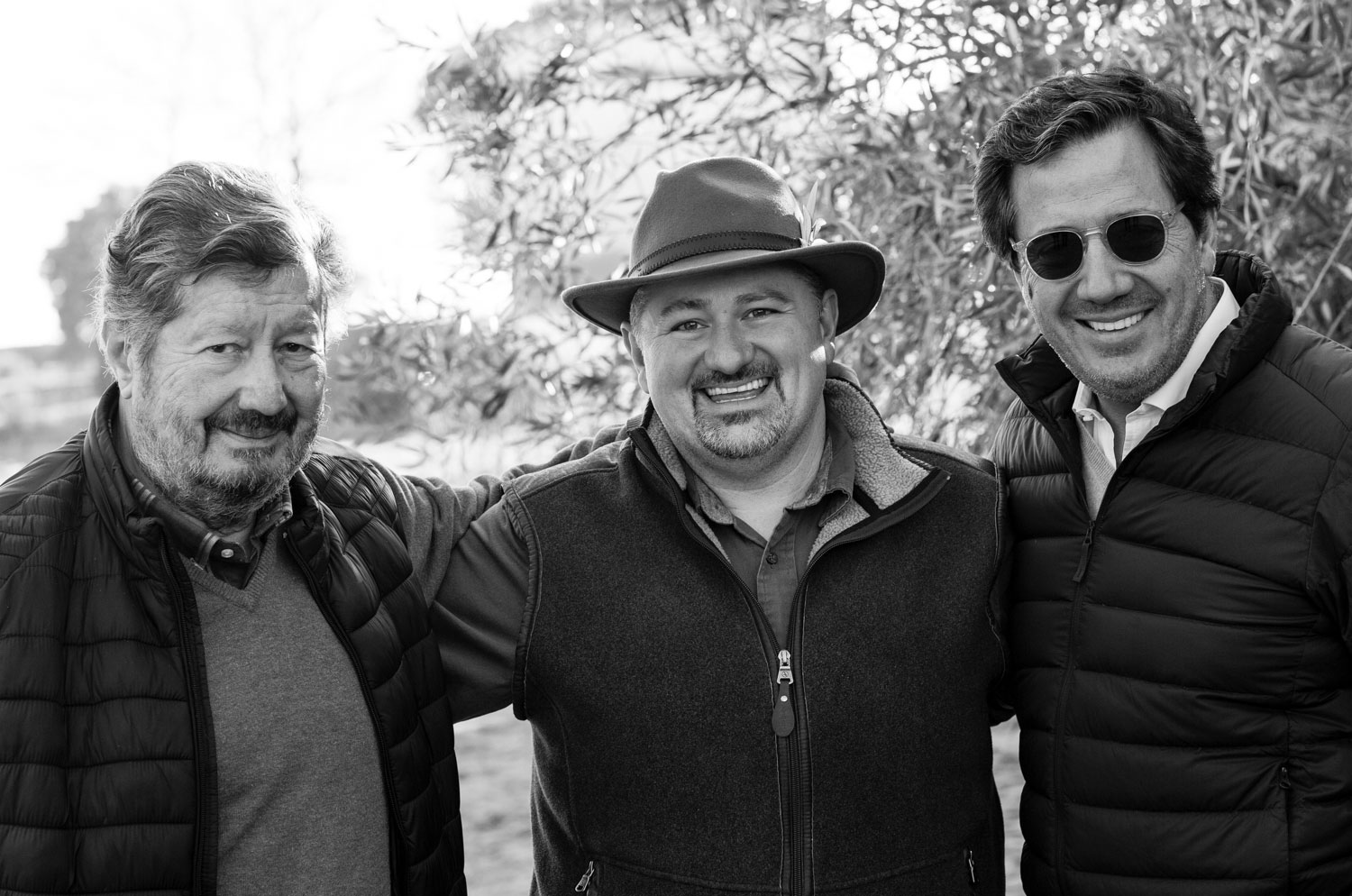
Because of these challenges, production costs in Alto Douro total about six times more than elsewhere. Thus the Madeiras focus solely on quality, not quantity. Their recent acquisition of an advanced Mori olive crusher (using knives rather than the more traditional hammer) has more than paid off—this year their oils were the best I’ve ever experienced from this grove.
Filipe and his team had to work strategically and quickly this season. Early predictions of “the best vintage ever” were defied when heavy rains in the middle of the spring disturbed the pollination process, reducing the number of blossoms (and, consequently, the volume of olives). Their production would only be about 40 percent of the expected harvest. The summer was very dry. (“We had no water,” Filipe reported, in an understatement.) Sometimes, though, as veteran Club members know, periods of water deprivation and stress to the olive trees can produce more intense flavors and aromas in the fruit, which works to your benefit.
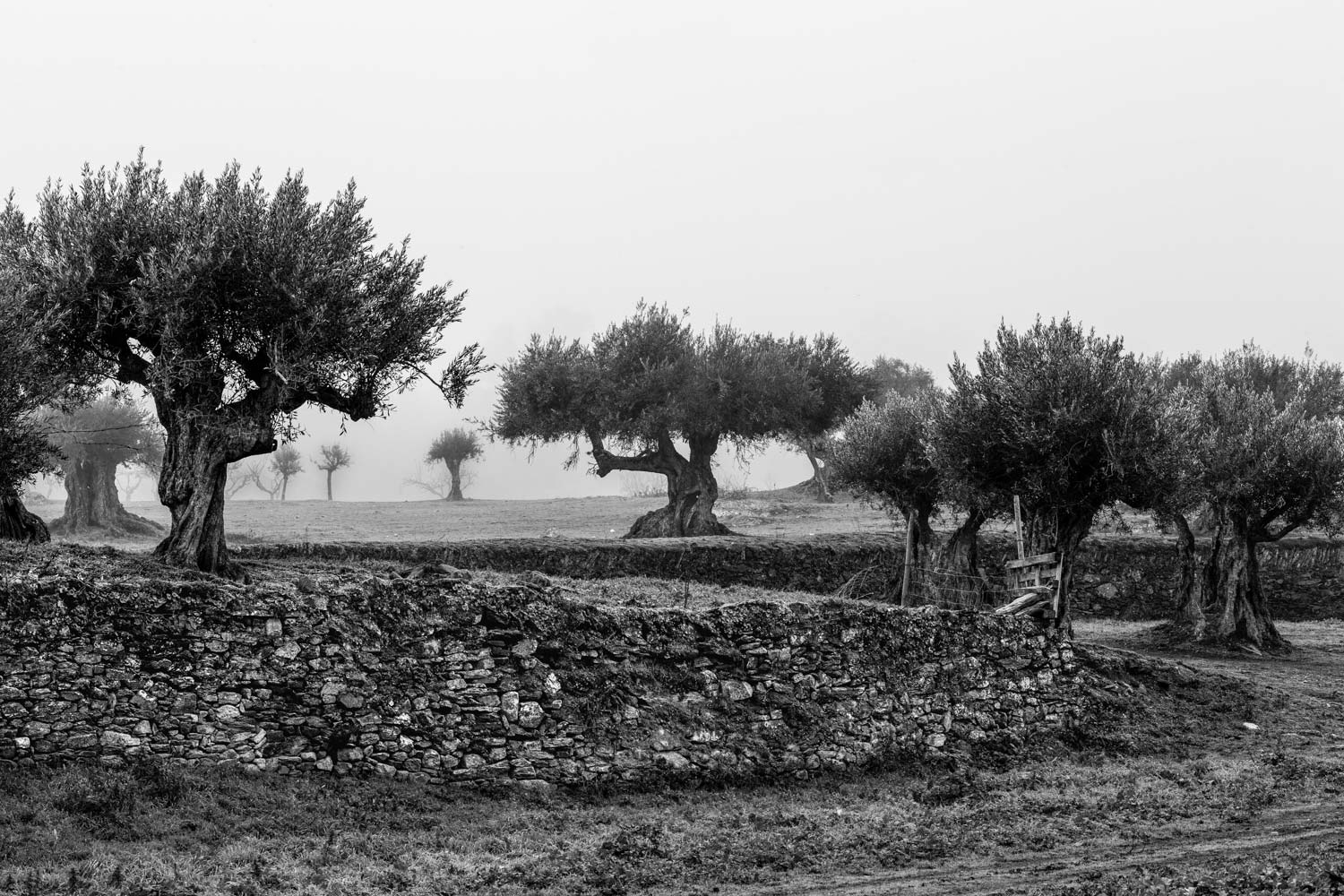
Filipe and his team harvested early to avert the impending ripening of the fruit and ran the mill 24 hours a day for 25 days straight. The effort was worth it. Having savored the oils from this farm for several years, I can proclaim this a breakout season— one that takes their product from world-class to “out of this world.” Filipe, Celso, and their team are so excited for you to taste this oil—a beguiling and verdant blend of unique Portuguese cultivars. In honor of Filipe’s mother, we are presenting this Club exclusive with the label Maria de Lourdes, featuring the family crest.
Clearly, there shall be no resting on laurels for this family. During my visit Celso announced that he had just bought more land. “We must work for the future,” he insisted, inspiring me with his passion. “We must plant trees for the future.”
Impressions and Recommended Food Pairings
Green, grassy, and alluring on the nose, presenting green tomato, basil, thyme, fennel, celery, and mixed salad greens punctuated by sweet hints of marzipan (almond paste), peppermint, and pear. In the mouth the flavor of green almonds blooms, along with nuances of tomato, basil, celery leaves, and mâche, The finish is deliciously long, revealing the palate-teasing pepperiness of arugula.
This oil complements a variety of foods: chicken, pork, turkey, and veal; codfish, halibut, swordfish, sea bass, lobster, mussels, and scallops; chicken, duck, or goose eggs; mild cheeses; breads; white beans; salads, especially those made with citrus or other fresh fruits, such as a spinach salad with pear, goat cheese, and walnuts or almonds; rice or simple pasta dishes; asparagus, green beans, fennel, okra, mushrooms, peas, and potatoes. Use it to make quick breads or drizzle it over yogurt, vanilla ice cream, pound cake with fruit, or chocolate mousse.
This Quarter’s Second Selection

Restaurante Rio’s main dining room in the whitewashed Andalusian town of Priego de Córdoba didn’t open for lunch for another 30 minutes, so our party—there to celebrate my selection this quarter of Aroden’s Hojiblanco as the Club’s medium olive oil—was directed to the lower bar-like level, an atmospheric room with, I was amused to note, a gumball-style vending machine stocked with roasted marcona almonds. Within minutes, we were served small glasses of cold beer, called cañas, and appetizer portions of crisp zucchini batons fried in olive oil. We promptly ordered another round of beers to get seconds of that “you-can’t-eat-just-one” zucchini. (It’s a myth that you can’t use olive oil for frying. One of the town’s signature products is olive oil-fried potato chips. We always pick up a few bags for the road.)
While we noshed, a parade of elderly people filed in and seated themselves—men at one table, women at another. They, too, ordered the diminutive beers. It was a Tuesday, but they were dressed in their Sunday best. We surmised the convivial gathering was a well-established ritual, not a one-off special occasion. The group was still there when we reluctantly left the restaurant. I learned a new Spanish word that day: sobremesa. It has no English equivalent, but the term refers to the delightful time (minutes or hours) you spend at the table after you’ve finished eating, enjoying the afterglow of the meal and especially, the company. I love the concept.
The mood at our table, where we passed a bottle of Aroden’s aromatic just-pressed Hojiblanco, was festive, too. Not expecting to be selected for the Club for the second harvest year in a row, the small co-op’s general manager, Luis Torres, and business manager, Clara Isabel Parejas, were over the moon. The inclusion of their enticing single varietal in this quarter’s trio of olive oils is a testament to the team’smaturing skills and consistency. To underscore the point, Cladium was recently named one of the world’s top ten olive oils by Evooleum, a highly-respected guide published in Spanish and English by Mercacei.
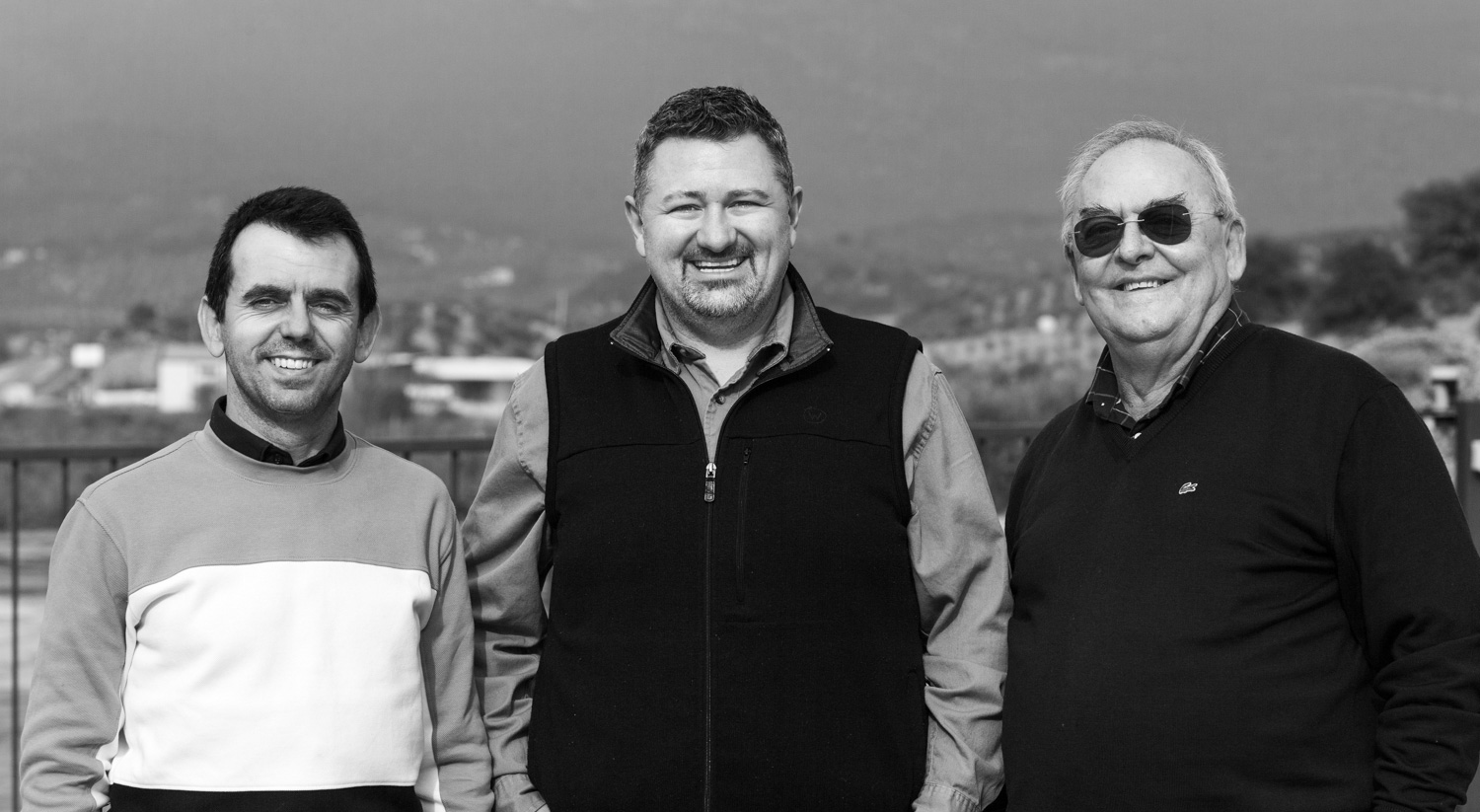
Aroden’s home, the Sierras Subbéticas National Park, is breathtakingly beautiful, truly screenshot worthy. It covers over 73,000 magnificent acres. Thousands of olive trees cling tenaciously to the steep slopes of the Subbéticas mountain range. Some are hundreds of years old, their trunks as fissured as the limestone escarpments that loom above them. Eagles, falcons, and Griffon vultures nest on the craggy cliffs, their six-foot wingspans casting shadows on the landscape.
The rugged topography of the region has challenged generations of Iberian farmers going back to Neolithic times. One of Aroden’s five founding families, the Gámiz clan, can trace its land ownership in Priego de Córdoba to the thirteenth century, when their Basque ancestor, Miguel Gámiz, planted his first olive trees. I can picture him crushing his olives with millstones and pressing them between woven mats of native esparto grass.
How I wish Miguel could, through some miracle of time travel, taste the fabulous oils his descendants and their partners in this small cooperative are producing today in their modern state-of-the-art mill. They built the facility— called an almazara—in 2002 to avoid dependence on the community mill. Initially, they pressed oil for their own use, selling any surplus to the bulk market. Then they realized their oil was exceptional—way too good to commingle with run-of-the-mill oils. In 2005, the co-op proudly introduced their premium bottled oil, Cladium.
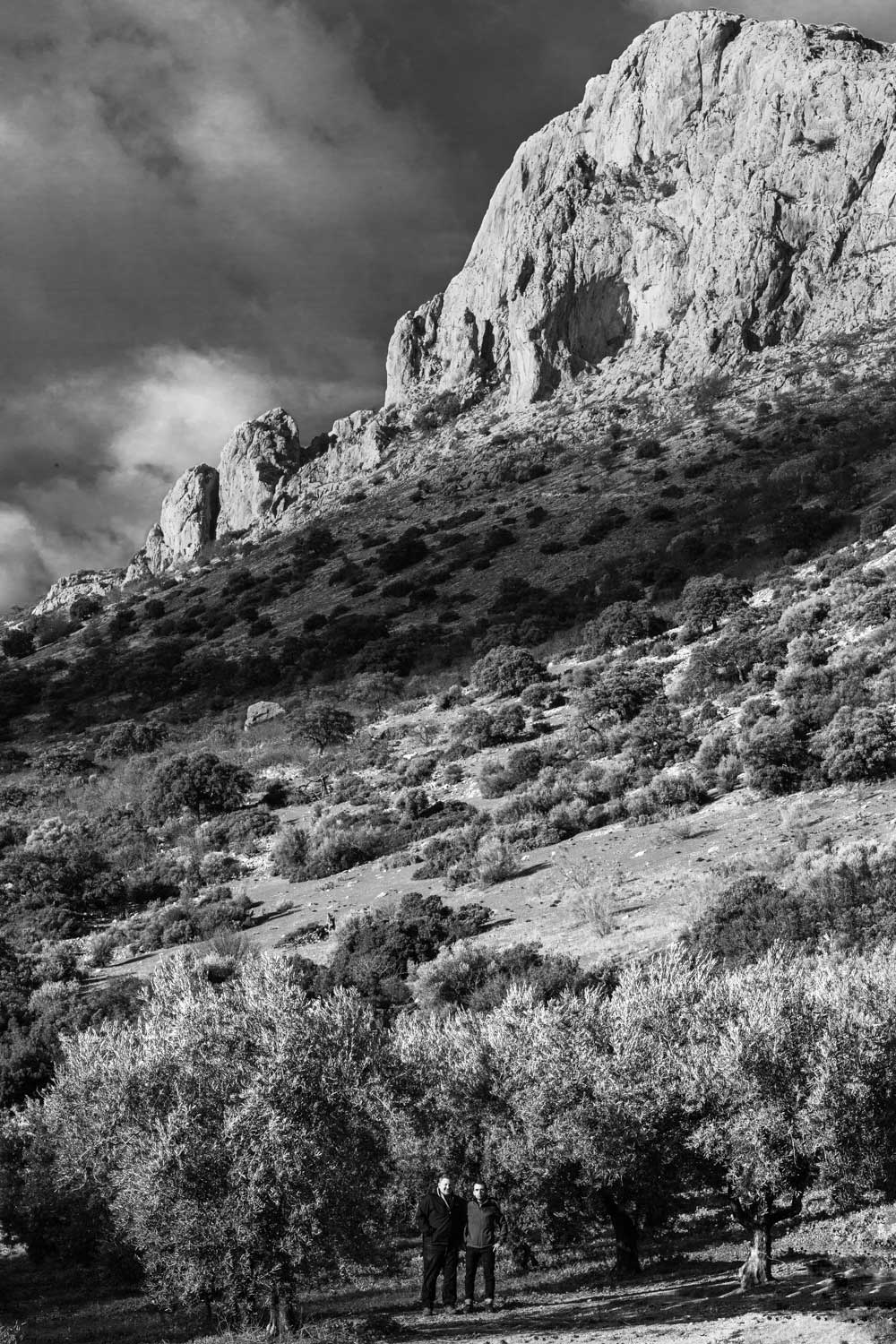
This season’s harvest was trickier than the previous one, Luis said, requiring him and longtime mill supervisor Fernando Sánchez to be even more discerning than usual. Only three percent of the olives were worthy of Cladium’s stunning mosaic label. Most of olives were harvested from the foothills of Mt. Tiñosa, what Luis calls “the Magic Mountain.” At 5,740 feet, it’s the highest peak in the Sierras Subbéticas.
The mellifluous word Aroden is actually an acronym for aromas de la naturaleza, “scents of nature.” A very appropriate moniker given the enchanting olfactory profile of this extraordinary oil. (See my notes below.) CLADIVM—more precisely, Cladium mariscus—is the Latin name for a sawgrass-like plant that thrives on the site of the Aroden mill. The spelling (with a “V” replacing the “U”) pays graphic homage to the Romans, former occupiers of Córdoba. The region was, historians say, the empire’s favorite source of “liquid gold.” Perhaps it will be yours, too. Enjoy.
Impressions and Recommended Food Pairings
The hardy cultivar Hojiblanca, able to endure harsh winters and calcareous soils, was planted to satisfy Caesar’s writ demanding more Andalusian olive oil. Wheatgrass, fennel, celery, green apple, tropical fruit, citrus peel, vanilla, and Belgian endive consort with eucalyptus and green walnuts on the intoxicating nose. On the palate my tasters and I detected baby spinach, pear, celery leaf, and walnuts, with a bold and spicy finish, featuring notes of white pepper and arugula.
Reach for this lovely oil when these foods are on the menu or you need an uncomplicated sauce: lamb (chops or leg of lamb), game birds, chicken legs or thighs, veal shanks, rabbit; salmon, tuna, or whitefish; shrimp or fried anchovies; tomato bruschetta; gazpacho; aged cheeses like Manchego; country-style or whole grain breads; artichokes, broccoli, cauliflower, yams, and romanesco; chocolate; and sweet or savory baked goods.
This Quarter’s Third Selection
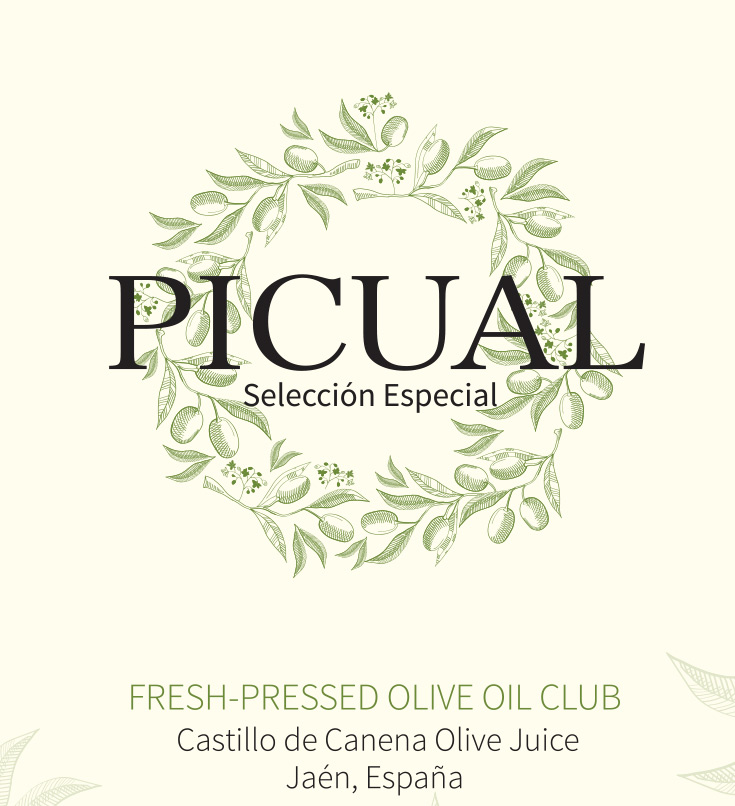
Francisco “Paco” Vañó recently shared some momentous news with me and my Merry Band of Tasters: the latest edition of Flos Olei, a guide to the world’s best olive oils, awarded his family-owned business, Castillo de Canena, 100 out of 100 points, one of only seven olive oil producers out of 500 worldwide to be named to the publication’s newly established Hall of Fame.
Olive oil expert and Flos Olei publisher Marco Oreggia says the perfect score—the equivalent of an Oscar in olive oil circles—is reserved for farms that have not only distinguished themselves in the various categories of the competition, but have achieved sustained growth and maintained “a stable goal of excellence.”
Castillo de Canena is very deserving of the recognition. I am so proud of Paco, my longtime friend, whom I consider to be one of the most capable, consistent, and well- respected ultra-premium olive oil producers I’ve met.
He has also proved himself to be an exemplary steward of the land that has been in the Vañó family since 1780. (The family home, an imposing fifteenth century castle overlooking the village of Canena, was named a National Monument in 1931.) Committed to biodiversity, the 3,700-acre farm hosts beehives, a large herd of sheep, and native wildlife. Five years ago, Castillo de Canena joined the Spanish Olive Groves Alive Project, and to date, has identified 114 species of birds on its property. (A color guide is in the works.) Last summer, two artificial vegetation-covered islands were floated in the farm’s large pond/water storage reservoir; they are expected to attract waterfowl and other nesting birds.
An important aside: perhaps you’ve heard that nighttime harvests were temporarily suspended in Andalusia and Portugal to protect migratory birds. The current ban applies only to groves that qualify as “super high-density.” SHD is the acronym used for olive groves laid out in compact trellis- or stake-supported rows. More common in the New World than the Old, they are harvested using special foliage-straddling equipment. Castillo de Canena is not subject to the restriction as their traditional groves are planted with several feet separating the canopies of the trees.
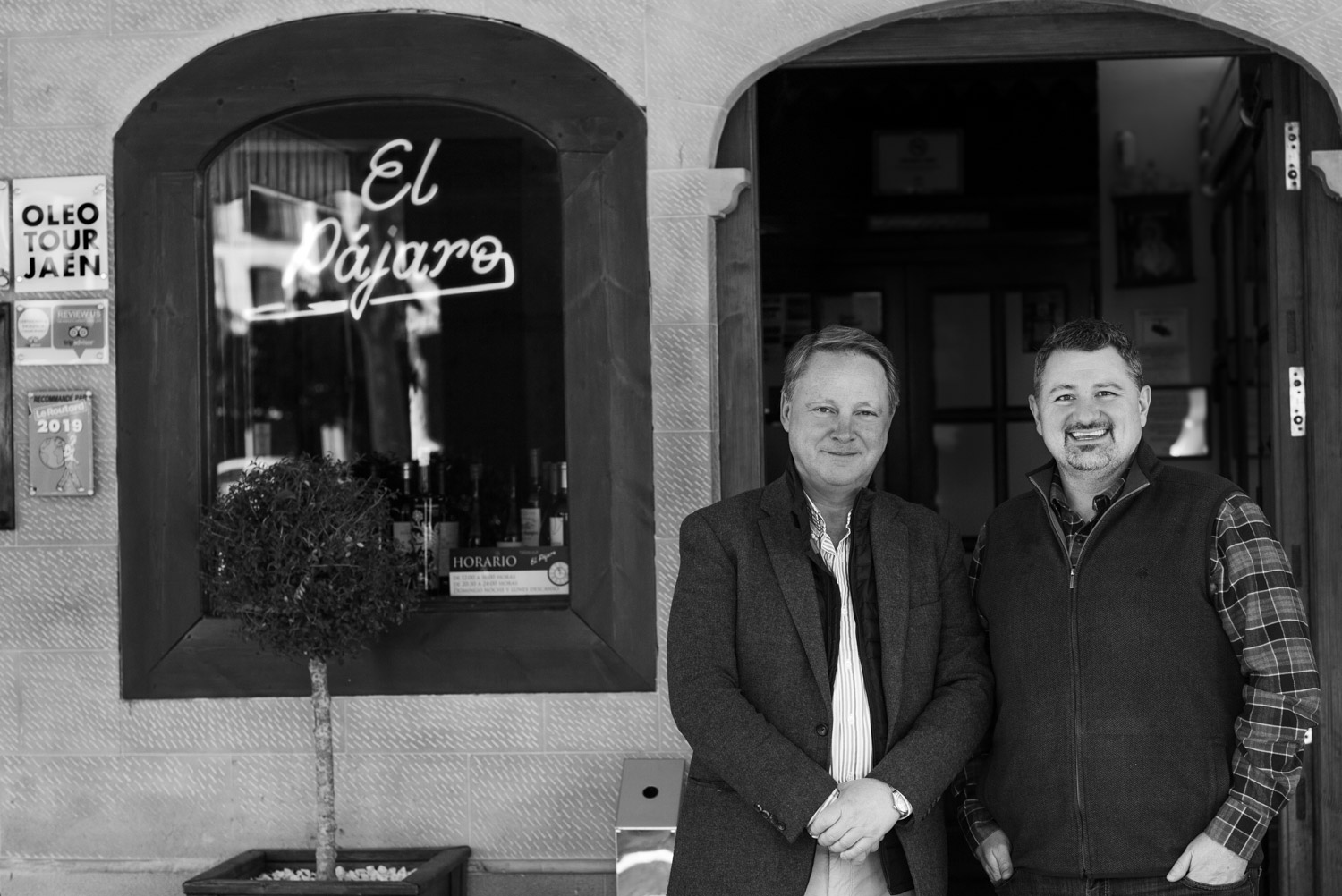
We lunched, appropriately, at Taberna El Pajáro (“tavern of the bird”) in Baeza, one of Paco’s favorite local restaurants and a popular stop on Jaén’s official olive oil tour.
It was an excellent choice. My Merry Band of Tasters and I dined there on a previous visit and remembered well the kitchen’s tender pork secreto (a cut resembling skirt steak that we have encountered nowhere else), olive oil-soaked whole peeled tomato appetizer with finely diced onion and oregano, and luscious, velvety crema Catalana (brûléed custard).
Thrilled with the balanced and elegant Picual we custom-blended for Club members, I was surprised to hear Paco proclaim this season’s harvest “the toughest” of his life. My Merry Band and I exchanged knowing glances, because he almost always says that. Overall quality was very high, he affirmed, but yields were down about 10 percent. (Oils that don’t meet Paco’s unyielding standards are sold to the bulk market; he focuses his energies on ultra- premium oils.) An arid summer and unseasonably high temperatures accelerated the harvest, he said. To protect the olives’ flavors and aromas, he dispatched his skilled and experienced harvest teams between 3 a.m. and 4 a.m. each day, recalling them around 1 p.m. The olives were pressed under strict temperature-controlled conditions.
Always open to innovation and new research, Castillo de Canena partnered this year with a Spanish company known for its expertise with table olives, each of which must be perfect when cured. Together, they developed a game-changing scanner that evaluates individual olives for ripeness and defects. Called EVOOlution, the prototype performed exceedingly well during tests and was used during the current harvest to vet olives used in the farm’s premium olive oils. In other planned improvements, the mill is undergoing a substantial renovation and expansion that will double its capacity. The addition of two milling lines featuring the state-of-the-art equipment will shave eight to ten days off the harvest period, minimizing the olives’ exposure to wind, rain, or frost. Paco looks forward to pressing four varietals at the same time, a real advantage when his test plots—recently planted with Italian and Syrian cultivars—mature.
The bold and beautiful Picual I’ve procured for you represents olive juice from three different plots. With 2,600 acres of Picual at varying altitudes, we could be incredibly choosy. Only the best fruit, harvested at its peak, was used to make this rare and exclusive blend.
Impressions and Recommended Food Pairings
Expect complex aromas when you open this assertive, vibrantly green blend of three Picuals. Rosemary, tomato leaf, parsley, wild fennel, kale, green banana, sage, cinnamon, and arugula rise from the tasting glass like a sassy culinary perfume. Unsurprisingly, it pulls no punches in the mouth, either, leading with intense flavors of green tomato and wheatgrass. Close behind, but in perfect harmonic step, are parsley, kale, arugula, green banana, and rosemary. You will notice the bitterness of Belgian endive and radicchio, along with a ginger-like spiciness.
Enjoy this oil with beef or game meats (especially grilled); oilier fish, such as mackerel or tuna; grilled octopus; tomato- or meat-sauced pasta dishes; herbed breads; paella and other savory rice dishes; fried eggs; cabbage, broccoli rabe, turnips, grilled fennel, rutabagas, Swiss chard, beets, grilled radicchio or Belgian endive; tomato salads, or salads featuring sturdy bitter greens; minestrone soup; Greek yogurt; and dark chocolate.
Olive Oil and Health
Adapted from an article in Science Codex by the Temple University Health System, November 25, 2019
Boosting brain function is key to staving off the effects of aging. And if there was one thing every person should consider doing right now to keep their brain young, it is to add extra virgin olive oil (EVOO) to their diet, according to research by scientists at the Lewis Katz School of Medicine at Temple University (LKSOM).
Previous LKSOM research on mice showed that EVOO preserves memory and protects the brain against Alzheimer’s disease.
In a new study in mice published online in the journal Aging Cell, LKSOM scientists show that yet another group of aging-related diseases can be added to that list—tauopathies, which are characterized by the gradual buildup of an abnormal form of a protein called tau in the brain. This process leads to a decline in mental function, or dementia. The findings are the first to suggest that EVOO can defend against a specific type of mental decline linked to tauopathy known as frontotemporal dementia.
Alzheimer’s disease is itself one form of dementia. It primarily affects the hippocampus—the memory storage center in the brain. Frontotemporal dementia affects the areas of the brain near the forehead and ears. Symptoms typically emerge between ages 40 and 65 and include changes in personality and behavior, difficulties with language and writing, and eventual deterioration of memory and ability to learn from prior experience.
Senior investigator Domenico Praticò, MD, describes the new work as supplying another piece in the story about EVOO’s ability to ward off cognitive decline and to protect the junctions where neurons come together to exchange information, which are known as synapses.
“The realization that EVOO can protect the brain against different forms of dementia gives us an opportunity to learn more about the mechanisms through which it acts to support brain health,” he said.
In previous work using a mouse model, in which animals were destined to develop Alzheimer’s disease, Dr. Praticò’s team showed that EVOO supplied in the diet protected young mice from memory and learning impairment as they aged. Most notably, when the researchers looked at brain tissue from mice fed EVOO,
they did not see features typical of cognitive decline, particularly amyloid plaques—sticky proteins that impair communication pathways between neurons in the brain. Rather, the animals’ brains looked normal.
The team’s new study shows that the same is true in the case of mice engineered to develop tauopathy. In these mice, normal tau protein turns defective and accumulates in the brain, forming harmful tau deposits, also called tangles. Tau deposits, similar to amyloid plaques in Alzheimer’s disease, block neuron communication and thereby impair thinking and memory, resulting in frontotemporal dementia.
Tau mice were put on a diet supplemented with EVOO at a young age, comparable to about age 30 or 40 in humans. Six months later, when mice were the equivalent of age 60 in humans, tauopathy-prone animals
experienced a 60 percent reduction in damaging tau deposits, compared to littermates that were not fed EVOO. Animals on the EVOO diet also performed better on memory and learning tests than animals deprived of EVOO.
Dr. Praticò and colleagues now plan to explore what happens when EVOO is fed to older animals that have begun to develop tau deposits and signs of cognitive decline, which more closely reflects the clinical scenario in humans.
Reference: Lauretti E, Nenov M, Dincer O, Iuliano L, Praticò D. Extra virgin olive oil improves synaptic activity, short-term elasticity, memory, and neuropathology in a tauopathy model. Aging Cell. 2020;19(1):e13076.
Kudos from Club Members
A Cordial Invitation from T. J. Robinson to Meet, Mingle, and Have Some Fun in Our Members-Only Facebook Group!
We’re having lots of fun over at our new Members Only page on Facebook. I and my Merry Band of Tasters invite you to join us! Your privileges include direct access to me, and I’d love to correspond with you and hear your opinions on the various food topics we like to chew on. You’ll also enjoy lots of my favorite recipes I share exclusively with Club members, behind-the scenes looks into my latest Olive Oil Hunter adventures, and much more. Drop in on our movable feast any time you feel like it. Simply request to join the group. We’ll quickly approve your access, and you can join in our lively (and delicious) conversation.
Recently I invited members of our group to answer this intriguing question: “If you could use fresh-pressed olive oil in just one recipe for the rest of your life, which would it be?” Here’s a taste of their answers:
Sourdough Carrot Cake, In My Daily Yogurt, Sautéed Veggies, Dressing, As A Drizzle, Roasted Chicken, Baked Potato, On My Three-Minute Eggs on Toast, My Daily Salad, Roasted Vegetables, Marinara Sauce, Drizzled on Veggies, With Spices Added to Dip Bread In, Marinated Mozzarella Balls, Drizzle It On EVERYTHING, Hummus, Junk Pot: Kielbasa, Potatoes, Onions and Kale; On A Spoon, Mixed with Grated Home-grown Garlic, White Pizza, Steamed Veggies, Tabouli!, Broccoli Rabe, On My Eggs, Cacio e pepe, EVERYTHING!, On Bronze Cut Linguine, A Shot – Straight Up every day! Spaghetti aglio e olio…
There were scores more, inspiring us all to conclude that choosing only one way to use fresh-pressed EVOO just won’t work!
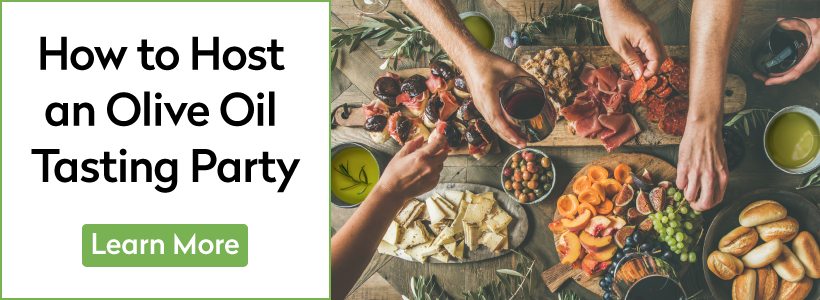
Recipes
 Milk Chocolate Cremosa with Espresso Parfait Miami chef and restaurateur Michael Schwartz (a friend of a friend) reports that this is one of his best-sellers. “(The) olive oil reinforces the richness of the cremosa,” he says. view recipe
Milk Chocolate Cremosa with Espresso Parfait Miami chef and restaurateur Michael Schwartz (a friend of a friend) reports that this is one of his best-sellers. “(The) olive oil reinforces the richness of the cremosa,” he says. view recipe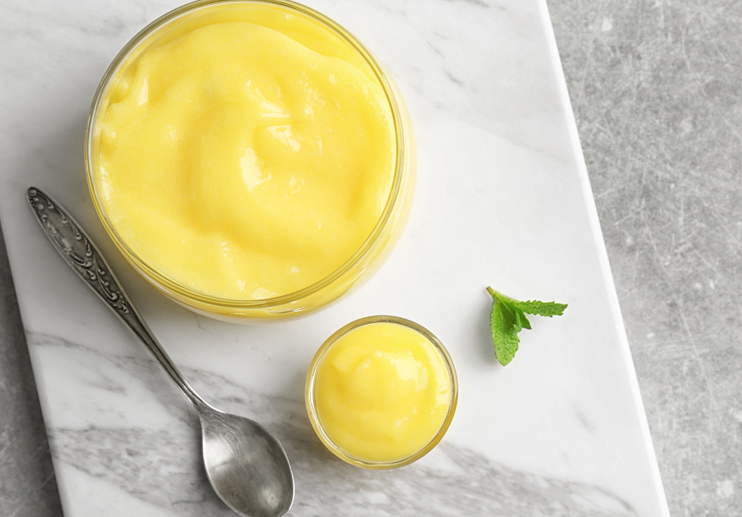 Six-Minute Meyer Lemon Custard Luscious with the sweet/tart notes of Meyer lemon (a cross between a lemon and a mandarin orange), this soft custard is the perfect ending to a Mediterranean meal. If you can’t find Meyer lemons, substitute the juice and zest of regular lemons, blood oranges, or mandarin oranges. view recipe
Six-Minute Meyer Lemon Custard Luscious with the sweet/tart notes of Meyer lemon (a cross between a lemon and a mandarin orange), this soft custard is the perfect ending to a Mediterranean meal. If you can’t find Meyer lemons, substitute the juice and zest of regular lemons, blood oranges, or mandarin oranges. view recipe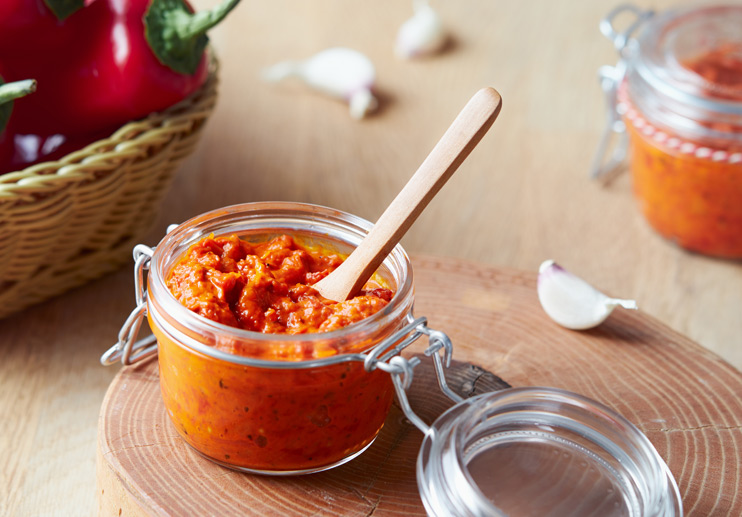 Romesco Sauce Romesco is one of Spain’s iconic sauces, good not only with grilled onions or leeks but also asparagus, broccoli, cauliflower, or brussels sprouts. You can even pair it with scrambled eggs or grilled meats, poultry, or seafood—it’s that versatile. view recipe
Romesco Sauce Romesco is one of Spain’s iconic sauces, good not only with grilled onions or leeks but also asparagus, broccoli, cauliflower, or brussels sprouts. You can even pair it with scrambled eggs or grilled meats, poultry, or seafood—it’s that versatile. view recipe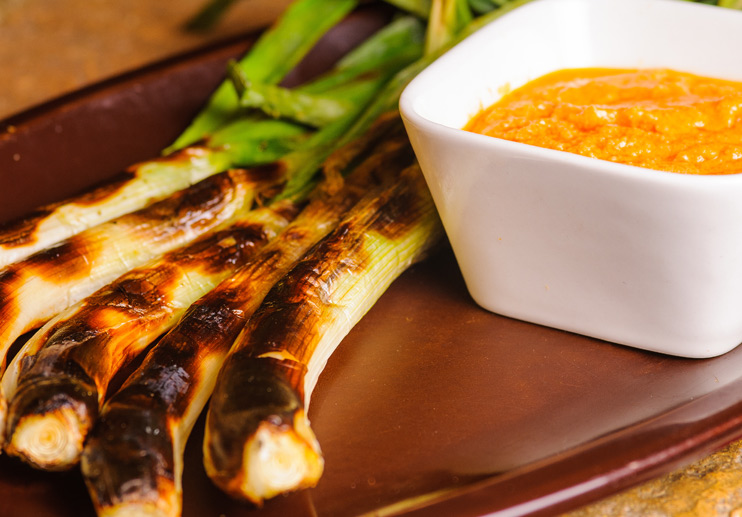 Grilled Spring Onions with Romesco (Calçots) A specialty of Catalonia, these leek-like onions—traditionally grilled over olive wood fires and served with nutty, brick-red romesco—are messy but delightful! view recipe
Grilled Spring Onions with Romesco (Calçots) A specialty of Catalonia, these leek-like onions—traditionally grilled over olive wood fires and served with nutty, brick-red romesco—are messy but delightful! view recipe Big-Flavour Broccoli with Manchego Reducing food waste is an objective we’d all do well to adopt. Part of the appeal of this recipe is its utilization of broccoli stems, which are often condemned to the trash or garbage disposal system. If you’re not a fan of umami-rich anchovies or don’t have them on hand, substitute 1/2 teaspoon of Worcestershire… view recipe
Big-Flavour Broccoli with Manchego Reducing food waste is an objective we’d all do well to adopt. Part of the appeal of this recipe is its utilization of broccoli stems, which are often condemned to the trash or garbage disposal system. If you’re not a fan of umami-rich anchovies or don’t have them on hand, substitute 1/2 teaspoon of Worcestershire… view recipe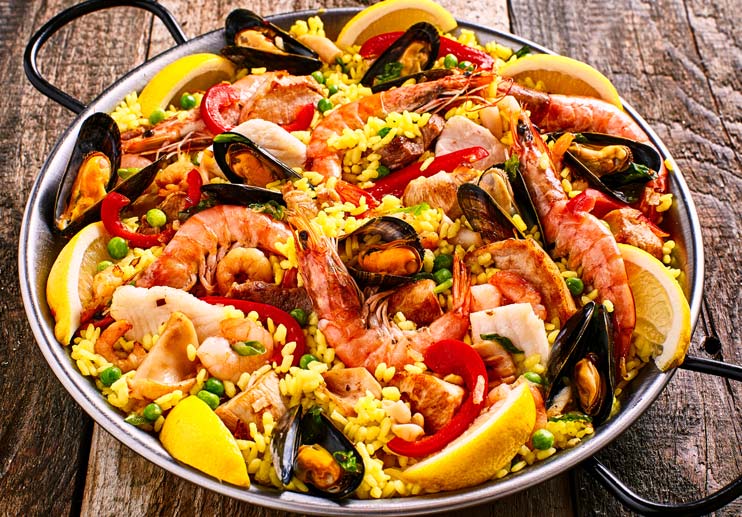 Paella Food historians say that paella (literally,“pan”) first appeared near the coastal city of Valencia in the 18th century. It’s a festive meal, one I enjoyed preparing recently at a private cooking class in Madrid taught by chef Arantxa Lamas, a Le Cordon Bleu graduate. Though traditionally grilled, you can also cook it on your stovetop. view recipe
Paella Food historians say that paella (literally,“pan”) first appeared near the coastal city of Valencia in the 18th century. It’s a festive meal, one I enjoyed preparing recently at a private cooking class in Madrid taught by chef Arantxa Lamas, a Le Cordon Bleu graduate. Though traditionally grilled, you can also cook it on your stovetop. view recipe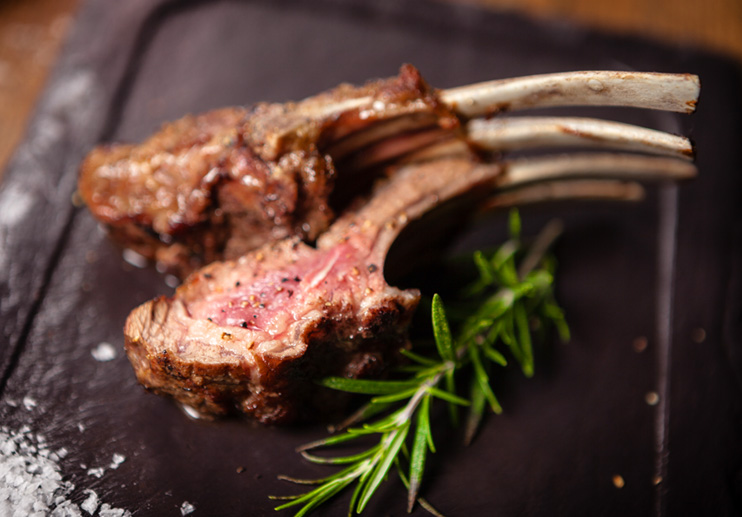 Rack of Lamb with Garlic and Rosemary The province of Aragon in northeastern Spain (between Barcelona and Madrid) is known for its lean and tender lamb. Lamb cooked in clay ovens is a specialty, in fact, of a Spanish restaurant chain called Asador de Aranda. In the meantime, satisfy your lamb cravings with this easy-to-prepare rack of lamb flavored with garlic, rosemary,… view recipe
Rack of Lamb with Garlic and Rosemary The province of Aragon in northeastern Spain (between Barcelona and Madrid) is known for its lean and tender lamb. Lamb cooked in clay ovens is a specialty, in fact, of a Spanish restaurant chain called Asador de Aranda. In the meantime, satisfy your lamb cravings with this easy-to-prepare rack of lamb flavored with garlic, rosemary,… view recipe Portuguese Barbecued Chicken (Frango no Churrasco) Centuries ago, the seafaring Portuguese established trade routes throughout the world, an endeavor that brought them into contact with many exotic foods. Among them was a potent little chile called piri-piri. Today, incendiary piri-piri sauce is a popular condiment in Portugal and on the African continent. If you can’t find it in the international aisle… view recipe
Portuguese Barbecued Chicken (Frango no Churrasco) Centuries ago, the seafaring Portuguese established trade routes throughout the world, an endeavor that brought them into contact with many exotic foods. Among them was a potent little chile called piri-piri. Today, incendiary piri-piri sauce is a popular condiment in Portugal and on the African continent. If you can’t find it in the international aisle… view recipe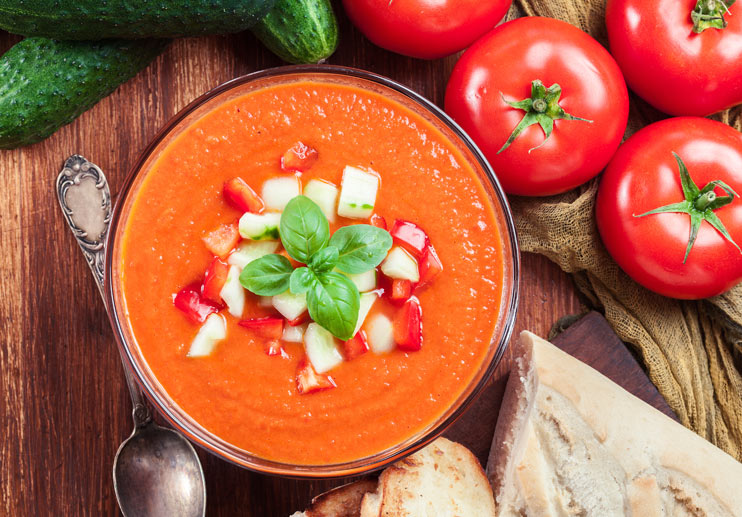 Gazpacho Here’s another great recipe I picked up from chef Arantxa Lamas during my time in Spain. It’s keto-friendly, too—a plus in my book. view recipe
Gazpacho Here’s another great recipe I picked up from chef Arantxa Lamas during my time in Spain. It’s keto-friendly, too—a plus in my book. view recipe Mushrooms in Garlic Sauce Madrid native and private cooking class instructor Arantxa Lamas, a graduate of Le Cordon Bleu, graciously shared with me her recipe for this much-loved dish. If you are interested in taking a class from Chef Lamas, you can contact her through her website, www.arantxalamas.com. view recipe
Mushrooms in Garlic Sauce Madrid native and private cooking class instructor Arantxa Lamas, a graduate of Le Cordon Bleu, graciously shared with me her recipe for this much-loved dish. If you are interested in taking a class from Chef Lamas, you can contact her through her website, www.arantxalamas.com. view recipe
